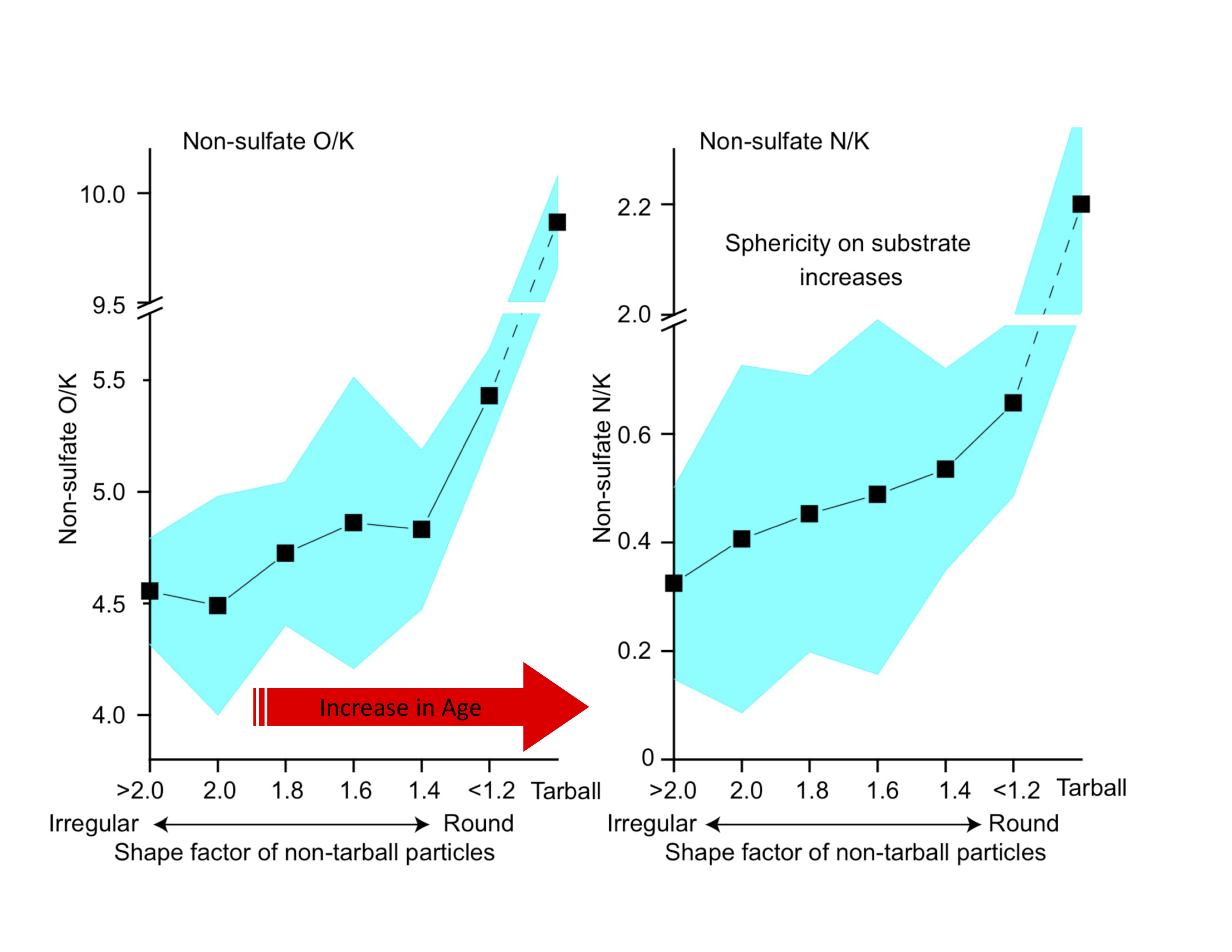Tarball particles form through rapid chemical and physical changes of organic matter in wildfires
Submitter:
Sedlacek, Arthur J — Brookhaven National Laboratory
Adachi, Kouji — Meteorological Research Institute
Area of research:
Aerosol Properties
Journal Reference:
Science
Biomass burning (BB) events emit enormous amounts of aerosol particles and gases into the atmosphere and thereby significantly influence regional air quality and global climate. Moreover, BB emissions are expected to increase in the future as a result of climate change. Earlier work by our group (Sedlacek et al. 2018) identified that spherical organic aerosol particles, commonly referred to as tarballs, are a major component of BB aerosols and are formed through the processing of primary organic aerosols (POA). Here we report (Adachi et al. 2019) that tarballs form through a combination of chemical and physical changes to POA.
Impact
It is becoming ever clearer that tarballs are a common particle type generated by wildfires. We show that increases in the amounts of N and O relative to a conserved tracer (elemental potassium) correlate with particle shape, and that this transformation occurs during the first hours following BB aerosol emission. This correlation suggests that chemical reactions involving O and N with primary organic aerosol (POA) change the particle viscosity and surface tension, resulting in tarballs.
The insights gained by better understanding the chemistry and microphysics behind tarball formation will lead to improved accuracy in quantifying the radiative forcing impacts of wildfires on regional and global climate.
Summary
Transmission electron microscopy of organic aerosols collected in BBOP at varying distances from wildfires shows that the presence of tarballs increases with distance and that this increase is tied to a change in composition. Using electron microscopy, it is reported that the ratios of N and O relative to K (a conserved tracer), increase with particle age and the highest ratios of N and O relative to K occur in spherical tarballs. Scanning transmission X-ray spectrometry and electron energy loss spectrometry analyses show that these changes in elemental abundance are accompanied by the formation of organic compounds that contain nitrogen and carboxylic acid. These observations imply that the increase in organic matter viscosity and surface tension associated with tarball formation proceeds by the addition of O and N to initially low-viscosity organic particles within the first few hours from emission.
It is becoming clearer that tarballs, a distinct class of organic particles based on their shape and underlying unique physical and chemical features, are a common particle type generated by wildfires. Their abundance dictates that we should better quantify the chemical, microphysical, and optical properties of these particles so that their contributions to aerosol radiation forcing can be better understood and constrained in climate models.


